#araminta ross
Explore tagged Tumblr posts
Text

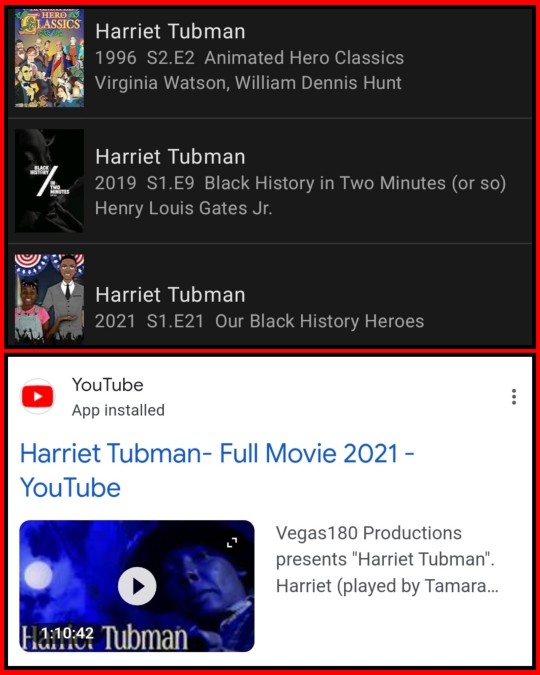
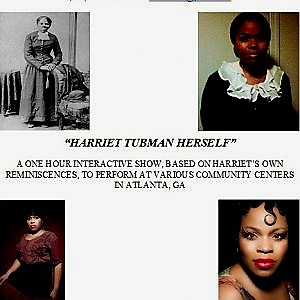
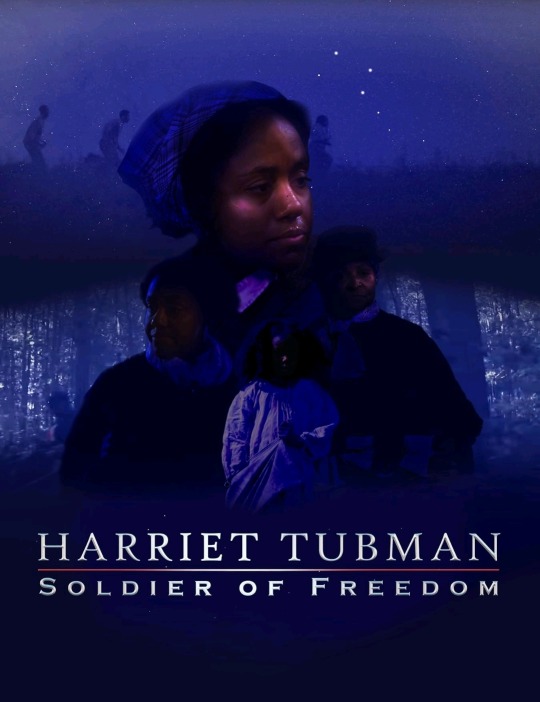

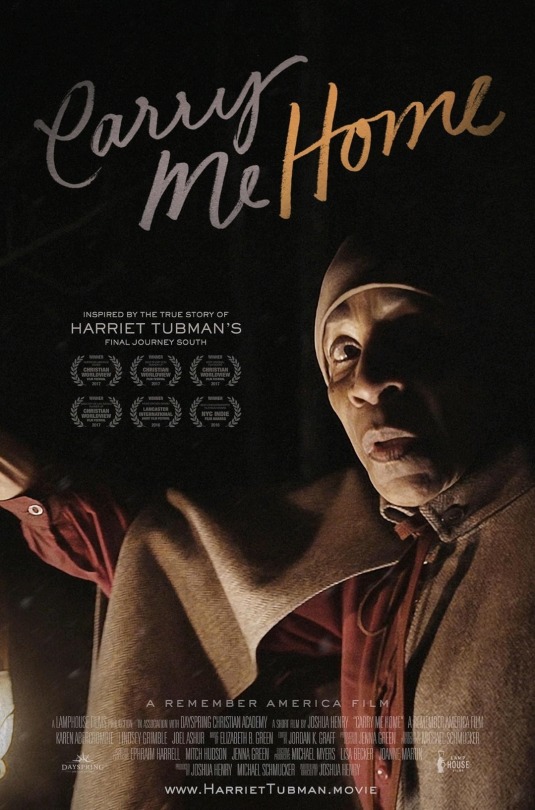
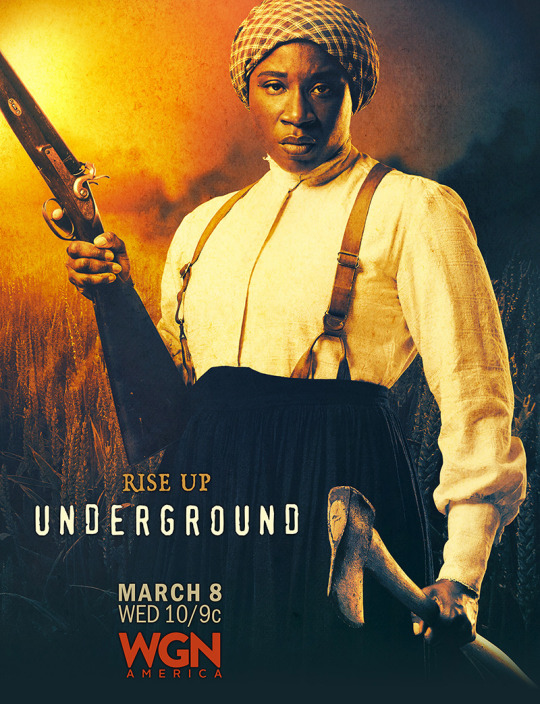


Happy Harriet Tubman Day
March 10th
If there is a comprehensive list out there of the depictions of Ancestor Araminta, lead me to it. In the meantime, here are some that I could find/remember.
I will say this one thing: some people had to have known that they didn't have no business saying "yes" to the role. This is not a masterlist.
One last thing: I feel like I used to see Harriet Tubman art, but in today's Tumblr, that search only gets us Clone High Harriet.
#Happy Harriet Tubman Day#Harriet Tubman Day#Harriet Tubman#Araminta Ross#BFCD Women's History Month#Happy Birthday#March Birthdays#March#Birthday Photosets#March 10#Nesha Photosets#Birthdays#celebrity birthdays#public figure#happy heavenly birthday#Happy Birthday Harriet Tubman#Girl That's Queuedt
27 notes
·
View notes
Text
Number 147 of 150
An illustration of Harriet Tubman. https://wp.me/pLP9Y-5e1 #kidlitart #kidlit #HarrietTubman #history #blackhistory #americanhistory #abolitionist #illustration #civilrights #slavery #spy
Harriet Tubman (1822-1913) was an American abolitionist best known for her association with the Underground Railroad, the secret network of safehouses run by abolitionist activists to help slaves escape to free states, territories, and British North America (now Canada). Originally named Araminta Ross, she was born into slavery. After she escaped in 1849, she personally led an estimated 70 others…

View On WordPress
#abolitionist#activist#African American#American history#Araminta Ross#art#art sample#black#black history#caricature#cartoon#celebrity#character#children&039;s illustration#childrenspublishing#civil war#commission#conductor#digital art#digital artist#drawing#educational#famous person#former slave#Harriet Tubman#historic figure#history#illustration#illustrator#image
2 notes
·
View notes
Text

Harriet Tubman was an American abolitionist and activist. Born into slavery, she escaped and, through the Underground Railroad, led many to freedom during the 19th century. As a Union scout and spy in the Civil War, she was also the first woman to lead an armed expedition. Tubman became an advocate for women's suffrage later in her life.
In 1859, Harriet Tubman met and supported John Brown in his raid on Harpers Ferry. During the Civil War, she served as a cook, nurse, scout, and spy for the Union Army. In the Combahee River Raid, she played a vital role in freeing more than 700 enslaved individuals.
Born Araminta "Minty" Ross in March 1821 (1822) in Bucktown, Dorchester County, Maryland, and died March 10, 1913, in Auburn, New York, at the age of 90-91.
#harriet tubman#love#slavery#underground railroad#abolitionist#black lives#respect#john brown#harpers ferry#civil war#suffrage
65 notes
·
View notes
Text


Harriet Tubman, 1895
Harriet Tubman, née Araminta Ross vers 1822 dans le comté de Dorchester, Maryland, était une abolitionniste américaine, militante pour les droits civiques et figure emblématique de l'Underground Railroad. Elle est surtout connue pour avoir aidé environ 70 esclaves à échapper à la servitude en effectuant quelque treize missions de sauvetage. En 1849, Harriet Tubman s'est échappée de l'esclavage pour se réfugier à Philadelphie. Par la suite, elle est retournée plusieurs fois dans le Sud pour sauver sa famille et d'autres esclaves via l'Underground Railroad, un réseau secret de routes et de refuges sûrs dirigé par des abolitionnistes. Harriet, surnommée « Moses » (Moïse), était réputée pour sa capacité à guider les esclaves en toute sécurité, affirmant n'avoir « jamais perdu un passager ». Pendant la Guerre de Sécession, elle a servi l'Union comme infirmière, cuisinière, éclaireuse et espionne. Elle a notamment conduit le raid de la rivière Combahee en 1863, libérant plus de 750 esclaves et devenant la première femme à diriger une opération militaire aux États-Unis. Après la guerre, Harriet Tubman s'est installée à Auburn, New York, où elle a continué son activisme, notamment en faveur du droit de vote des femmes. Elle a fondé la Harriet Tubman Home for the Aged, une institution pour les personnes âgées et nécessiteuses et a travaillé aux côtés de figures notables comme Susan B. Anthony et Elizabeth Cady Stanton dans le mouvement pour le suffrage féminin. Harriet Tubman est décédée le 10 mars 1913, laissant derrière elle un héritage de courage et de lutte pour la liberté et l'égalité. Son influence perdure à travers de nombreux honneurs posthumes, dont l'initiative de placer son image sur le billet de 20 dollars américains.
19 notes
·
View notes
Text
Before vs After
Hi I have so many of these at this point its practically my brand. I have this old character I named her after Harriet Tubman, Before she was Harriet Tubman so Araminta Ross. I love the name Araminta so much. She's basically a little spirit that uses fireflies to help guide you. I hope you enjoy her.


#art#artists on tumblr#digital art#ibispaintdrawing#artwork#ibispaint art#my art#ibispaintx#illustration#made in ibis paint#before and after#night#spirit#drawings#artists of tumblr#ibispaintapp#black girl beauty#black girl magic#black women#black is beautiful#firefly#holloween#ghost#halloween
11 notes
·
View notes
Note
Minty is a stupid name
babes, are you okay ?
but for your info, her name is araminta and she's named after araminta ross aka harriet tubman. just as other members of her family are named after prominent black figures
but seriously ... are you okay ? do you maybe need a snickers ? you're not yourself when you're hungry
6 notes
·
View notes
Text
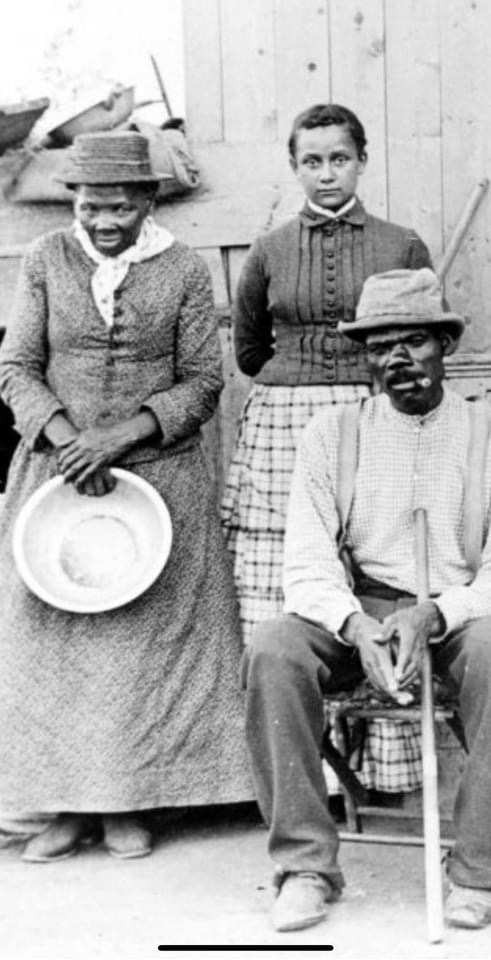

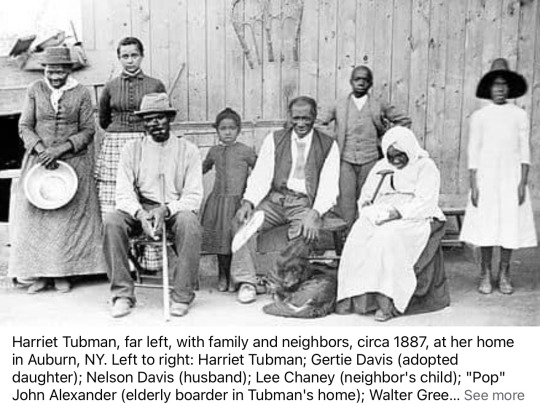
Did Harriet Tubman ever see her sisters again?
Edward Brodess sold three of Tubman's sisters, whom she never saw again.
Tubman escaped slavery and rescued approximately 70 enslaved people, including members of her family and friends. Harriet Tubman's family includes her birth family; her two husbands, John Tubman and Nelson Davis; and her adopted daughter Gertie Davis.
Tubman's parents—Benjamin "Ben" Ross and Harriett “Rit" Greene Ross—were enslaved people who were owned by two different families. Their lives came together when Mary Pattison Brodess, Rit's owner, married Anthony Thompson. Ben Ross, owned by Thompson, met and married Rit Greene. They lived together until about 1823 or 1824, when Rit and their children went to the Brodess farm. Ben was a timber estimator and foreman and Rit was a domestic servant. After Ben was freed, he bought his wife's freedom. Ben was a conductor on the Underground Railroad and slaveholders were becoming suspicious of his role in escapes in the area. Tubman, having freed other family members, rescued her parents. After a short period in St. Catharines in Ontario, Canada, Tubman and her parents settled in the Auburn, New York area.
Tubman married a free man, John Tubman in 1844. In 1849, Tubman fled the area, believing that she was going to be sold. She returned to the area to bring John Tubman north with her, but he had already married another woman. Tubman operated a boarding house out of her home in Auburn and Nelson Davis boarded with her for three years before they were married in 1869. Davis fought during the American Civil War. They adopted a girl, Gertie, and operated several businesses out of their farm. They raised pigs and chickens, operating a farm selling eggs and butter.
She made 13 trips to Maryland to bring back her brothers and parents, other family members, friends and others. She did not know of the whereabout of her sisters, except Rachel who was separated from her children and died before the family could be reunited.
Born Araminta "Minty" Ross, her parents were Benjamin "Ben" and Harriet "Rit" Greene Ross. They were "respected as clever, honest, and religious people with a strong sense of family loyalty".
Ross family sites in Maryland. Ben lived at Peters Neck, and for awhile Rit and 5 children lived there as well. Rit and her children lived at Brodess Farm beginning about 1824. Ben later lived at Poplar Neck, and Rit joined him there after he purchased her freedom around 1854.
Around 1785 or 1787, Benjamin Ross was born in Dorchester County, Maryland, the property of wealthy landowner Anthony Thompson,who married Mary Pattison in 1803. She was the slaveholder of Rit Greene. Ben and Rit were married in 1808, through an informal marital ceremony, which was their only option to commit to one another.
Ben was a lumberman who supervised slaves who brought down poplar, oak, and cypress trees. He then transported them to Baltimore, where they were used to build ships. In the late 1830s and early 1840s, Ben and Tubman both worked on digging canals for Lewis and John T. Stewart, who were shipbuilders.
Anthony Thompson died in 1836. In the early 1840s, Ben was emancipated and received 10 acres of land following Anthony Thompson's death, as stipulated in his will.Thompson's son, Dr. Anthony C. Thompson, a "timber magnate" and a physician, inherited the estate. He also owned Poplar Neck, an area in southern Caroline County, where Thompson sent free laborers and enslaved people. Poplar Neck is approximately 35 miles from Peters Neck, where Tubman was born. Ben once said that Dr. Thompson was "a rough man towards his slaves, and declared, that he had not given him a dollar since the death of his father". He ultimately sold his 10 acres to Dr. Thompson.
He continued to work as a foreman and lumber estimator by hiring himself out within the Eastern Shore for $5 (equivalent to $164 in 2023) a day. He saved his earnings to buy his wife's freedom.
He was a conductor on the Underground Railroad,which included hiding people on his property in Caroline County. The increase in successful escapes drew the attention of local law enforcement in 1857.He was seen as a "primary agitator", such as with the escape of the Dover Eight, which led to Ben and Rit's trip north to avoid retribution. They initially moved to St. Catharines, Ontario in Canada, but the climate was too cold for the 70-year-old couple and they then moved to Fleming outside of Auburn, New York.
Rit was born about 1785 or 1787 in Dorchester County, Maryland. Rit and her mother Modesty were owned by Atthow Pattison, and they lived on his 265-acre farm near Blackwater National Wildlife Refuge east of the convergence of the Blackwater and Little Blackwater Rivers. Tubman believed that Modesty had arrived in the colonies on a ship from Africa. Her grandmother may have come from the area now known as Ghana on West Africa's Gold Coast. People of that area are of the Ashanti ethnic group. In 1791, Modesty does not appear in Pattison's will.
In January 1797, Pattison died and left Rit to his granddaughter Mary Pattison, who was the wife of Joseph Brodess. There was a stipulation in Pattison's will that she and her children should be freed when they reached forty five years of age. In 1803, Mary Pattison Brodess married Anthony Thompson, who had an enslaved man named Benjamin Ross. She died in 1809 and her son Edward inherited her estate.
Initially, her enslaved parents and siblings lived in Ben Ross's cabin on the Anthony Thompson farm at Peters Neck in Dorchester County, Maryland, in what is now the Blackwater National Wildlife Refuge. Around 1823 or early 1824, after the death of Mary Pattison Brodess Thompson, Edward had Rit and her five children moved ten miles away to the Brodess farm in Bucktown, where she worked as a domestic servant. Edward sold her daughter Linah. He attempted to sell her son Moses to a slave trader from Georgia, but Rit traded off hiding him in the woods and her cabin until the trader gave up and left.
Edward Brodess decided not to honor the stipulation in Pattison's will that would have freed Rit and her children at the age of 45. Edward died in 1849. Eliza Ann Brodess inherited her husband Edward's estate. Edward, and then his wife, Eliza Ann, hired Rit out and kept the money that Tubman earned. Gorney Pattison, great-grandson of Atthow, filed a lawsuit against Brodess for the monies that she earned, since she and her husband had not honored Atthow Pattison's wishes. Pattison lost the case.
Ben purchased his wife's freedom from Eliza Ann Brodess for $20 (equivalent to $654 in 2023) in 1854 or 1855, and the bill of sale was recorded on June 11, 1855, at the Dorchester County Court. Rit was not manumitted because a law of Maryland did not permit for enslaved people over age 45 to be set free. She then lived at Ben's cabin in Caroline County.
Freedom in New York
Fearing that she was going to be sold away from Maryland, Tubman ran away in 1849. She followed the "north star" and was aided by white and black people to make her way north. Her parents were among the people that she brought north and out of slavery. They escaped with Tubman in 1857.
I had crossed the line of which I had so long been dreaming. I was free; but there was no one to welcome me to the land of freedom, I was a stranger in a strange land, and my home after all was down in the old cabin quarter with the old folks, and my brothers and sisters. But to this solemn resolution I came: I was free and they should be free also. I would make a home for them in the North, and the Lord helping me, I would bring democracy all here.
— Harriet Tubman
Tubman arrived in Caroline County, Maryland with a horse and a makeshift wagon to pick up her parents, as well as the belongings they most treasured on their trip north. They traveled at night to a train that took them to Wilmington, Delaware, where they waited for Harriet at the home of Thomas Garrett. After a stop in Philadelphia to meet William Still, they headed north on a train to St. Catharines in Ontario, Canada, where Tubman had her headquarters and waited for fugitive slaves.
Tubman made a meager income chopping and selling wood and working for farmers. Her parents spent a difficult winter, subject to illnesses from the cold. William H. Seward, the governor of New York, helped arrange for the purchase of land in Auburn, New York for Tubman and her parents. Her parents lived in Auburn the rest of their lives. When Tubman was away on Underground Railroad trips or during the American Civil War, friends looked after her parents. Ben died about 1871 in Auburn, New York. Rit died in October 1880, nearly 100 years of age.
Ben and Rit had nine children together. Dorchester County records provide the names of Harriet's four sisters: Linah (b. 1808), Mariah Ritty (b. 1811), Soph (b. 1813), and Rachel—and four brothers: Robert (b. 1816), Ben (b. 1824), Henry, and Moses. Harriet also considered two of her nieces as sisters: Harriet and Kessiah Jolley.
Edward Brodess sold three of Tubman's sisters, whom she never saw again. A trader later wanted to buy her youngest brother, Moses, but Rit was able to resist being separated from her son.
A conductor on the Underground Railroad, Tubman made 13 return trips over 10 years to lead about 70 + people north, including her parents, siblings, and friends to freedom. Her first trip was in December 1850 when her niece Kessiah and her two children were to be sold. At the auction, Kessiah was sold to her husband John Bowley, a free black man. Before the children could be sold, the family left with Tubman for Philadelphia. Tubman led three of her brothers and other people away from Peters Neck on Christmas, 1854. Doing so, she took the risk of becoming enslaved again or lynched if she was caught; escaping slavery was even more risky after the passage of the Fugitive Slave Act of 1850. As a result, Tubman extended travel routes into Canada, where slavery was prohibited.
Three of Tubman's brothers worked at a plantation near a free black named Jacob Jackson. In 1854, Tubman had a letter sent to Jackson to coordinate the escape of the young men. She would look for them at her parents' home at Poplar Neck in Caroline County. The end of the letter states "tell my brothers to be always watching unto prayer and when the good ship of Zion comes along, to be ready to step on board." She was particularly concerned that her brothers would be sold to the Deep South.
For ten years, during multiple attempts, Tubman tried to rescue her sister Rachel, and her children, Angerine and Ben. During those attempts, Rachel had been separated from her children and she would not leave without them. In late 1860, Tubman found that Rachel had died and she was unable to rescue her niece and nephew.
Her brother John, his wife Millie, and their son Moses lived next to Tubman in Auburn. A number of nieces and nephews lived in Auburn, New York.
7 notes
·
View notes
Text

Harriet Tubman by Anjini Maxwell
Harriet Tubman (born Araminta Ross, c. March 1822– March 10, 1913) was an American abolitionist and social activist. After escaping slavery, Tubman made some 13 missions to rescue approximately 70 enslaved people, including her family and friends, using the network of antislavery activists and safe houses known collectively as the Underground Railroad. During the American Civil War, she served as an armed scout and spy for the Union Army. In her later years, Tubman was an activist in the movement for women's suffrage.
#anjini maxwell#harriet tubman#herstory#female portrait#women in history#black history#black women in history#art#artwork#irl women/girls#american civil war#American history
21 notes
·
View notes
Text
15 notes
·
View notes
Text
Who is Araminta?
Araminta is an earth-based jewelry studio that deeply explores soul sovereignty, inner realms, and connecting the ethereal with the tangible through creating mixed-media wearable adornments. In combining elements, dreams and objects, we hope to invite you to imagine, act, and set yourself free…
Araminta is named after Araminta Ross, also known as Harriet Tubman. After a life of guiding others to freedom, she is still often called on from the beyond for this very same purpose. We honor her with the naming of our studio, and also hope that our work is gifted with her untamable spirit, and a reminder to you that you have a sovereign soul.

2 notes
·
View notes
Text
WIZARDS OF HISTORY!
Aliester Crowley. Natch. Smelled a lot like sex and candy.
Araminta Ross (Harriet Tubman). Hear the power in the simple recitation of her name. Go ahead. Take a moment and shape the form of it with your mouth. Feel it's resonance and know it's strength. It forms the shape and the pull of freedom. A name. Imagine the presence of the one who gave that name such might.
Merlin/Myrddin/Marzhin. Not necessarily an actual figure, but most certainly a described path hidden in folklore and stories. The universe speaking through the zeitgeist of myriad dreamers and artists to paint the picture of a possibility. It is (basically) as follows: Dream -> Make Art -> Realize Your Art is More Than Art -> Go Fucking Batshit Crazy -> Innawoods -> Speak With Universe (In The Shadows There Dwells The Conversation of Dichotomy) -> Oh. Magic. Duh. -> Speak *With* Universe -> Get Comfy -> Become Part Gremlin, Part Natural Disaster. (Tangent: this is the path I found.)
Jesus. Contentious. Historically accurate? eh. Doesn't matter. Smote a fucking fig tree with his mind in a rage cuz it wouldn't bear fruit when he told it to. Has a lot of confusing lore that often disagrees with lore from sometimes even the same source. Wizard. Confirmed. At least a simple cautionary tale about toxic relationships and found family that any Wizard would find useful. (Tangent: I almost accidentiallied down this path.)
Franz Bardon. Hermetic scholar. Wrote lots of books. Liked ritual. Some good take-aways. Like the witch hazel eye cleansing thing. Honestly, he was too wrapped up in the minutiae of trying to find and categorize stuff he didn't understand. It's a common thing, to be overwhelmed. Paved the way for others, tho.
Fred Rogers. Could not wish for a better example. Walked in magic wreathed with love.
Bob Ross. A ritualist of distinction and poise. See the path of his words and workings. It is worth the diversion.
Literally EVERY lgbtqia+ person. We have all embraced a truth in the universe rejected by the vast majority, opening a path to magic and wisdom that many are choosing to take. That simple contention has created an entire war of modern wizards that echo and resound with the might of all those that came before.
5 notes
·
View notes
Text
Harriet Tubman | Clone High Wiki | Fandom
I didn't care for the first version of Clone High, but I enjoyed the reboot.
#black female cartoon characters#cartoons#wikis#clone high#adult animation#clone high harriet tubman#Black Femme Character with Black Voice Actor#Ayo Edebiri#girl that's queuedt
3 notes
·
View notes
Text

Harriet Tubman (born Araminta Ross, (March 1822 – March 10, 1913) was an abolitionist and political activist. Born enslaved, she escaped and made some 13 missions to rescue approximately 70 enslaved people, including family and friends, using the network of antislavery activists and safe houses known as the Underground Railroad. She helped abolitionist John Brown recruit men for his raid on Harpers Ferry. She served as an armed scout and spy for the Union Army. She was an activist in the struggle for women’s suffrage.
Born enslaved in Dorchester County, Maryland, she was beaten and whipped by her various masters as a child. She suffered a traumatic head wound when an irate slave owner threw a heavy metal weight intending to hit another enslaved, but hitting her instead. The injury caused dizziness, pain, and spells of hypersomnia, which occurred throughout her life. She began experiencing strange visions and vivid dreams, which she ascribed to premonitions from God. These experiences, combined with her Methodist upbringing, led her to become devoutly religious.
In 1849, she escaped to Philadelphia and returned to Maryland to rescue her family. One group at a time, she brought relatives with her out of the state and guided dozens of other enslaved to freedom. Traveling by night and in extreme secrecy, she (or “Moses”, as she was called) “never lost a passenger”. After the Fugitive Slave Act of 1850 was passed, she helped guide fugitives farther north into British North America and helped the newly freed enslaved find work.
She worked for the Union Army, as a cook, nurse, armed scout, and spy. The first woman to lead an armed expedition in the war, she guided the raid at Combahee Ferry, which liberated more than 700 enslaved. She retired to the family home on property she had purchased in 1859 in Auburn, NY, where she cared for her aging parents. She was active in the women’s suffrage movement until illness overtook her, and she had to be admitted to a home for elderly African Americans that she had helped establish years earlier. #africanhistory365 #africanexcellence #womenshistorymonth
0 notes
Photo

Welcome to March, aka Women’s History Month, a paltry 31 days in which we honor the nearly endless contributions of amazing women on this planet, all of whom deserve recognition 365 days a year. This month, we hail all women who stand — and stood — for progress, even by sitting (on an Alabama bus, that is). We honor women who refuse to back down despite threats and danger. We remember women who created or continue to create safe spaces for others through powerful words and courageous actions. In fact, we’re determined to celebrate women’s history and the women around us every day. Related story Sasha Obama’s Super-Rare Outing Shows How She’s Transforming Into Her Mom Michelle’s Mini-Me Of course, it’s impossible to write about all of history’s wonderful women at once (we’d be writing until the end of time). But just for fun, here’s one shortlist (Do you know how hard it is to come up with a shortlist?) of must-know women to teach your kids about, from yesterday’s envelope-pushers to today’s game-changers — all of whom continue to inspire and empower us and our daughters every day. Democracy’s biggest fan: Stacey Abrams Stacey Abrams, 2022 Kristin Callahan/Everett Collection After losing her bid to be governor of Georgia in 2018, Stacey Abrams didn’t retreat into her other successful careers, lawyer and romance novelist. Instead, she founded Fair Fight, an effort to make sure the restrictions placed on voters across the country (particularly in areas where voters of color live) wouldn’t get in the way of people exercising their rights in this democracy. She also was one of the few who had faith that Georgia’s Democratic voters could turn out and deliver a victory in both the presidential and U.S. Senate races. Whichever party you’re affiliated with, you’ve got to be in awe of the way Abrams was able to energize volunteers and grassroots organizers, placing a spotlight on voter suppression that we won’t be turning off anytime soon. And she’s done it all in the name of other people’s campaigns, not her own. Famous words: “When we show up, act boldly, and practice the best ways to be wrong, we fail forward, no matter where we end up, we’ve grown from where we began.” The O.G. activist: Harriet Tubman Harriett Tubman, 1885. H. Seymour Squyer Tubman — that is, Araminta Harriet Ross — was born into slavery but made a stunning escape in 1849. She became a leading abolitionist, rescuing innumerable others from slavery by operating the Underground Railroad. This secret route of tunnels, back roads and safe houses led from the South all the way to Pennsylvania. Many don’t know Tubman also dedicated her life to helping the elderly and indigent and founded her own Home for the Aged. In 2016, the U.S. Treasury Department announced a plan to replace Andrew Jackson’s likeness on $20 bills with Harriet Tubman’s. Under the Trump administration, that plan was delayed (why are we not more surprised?), but we’re hoping to see those Harriet bills soon. Famous words: “I freed thousands of slaves, and could have freed thousands more, if they had known they were slaves.” The civil rights trailblazer: Rosa Parks Rosa Parks, 1964 Courtesy Everett Collection Born in Alabama in 1913, activist Parks is perhaps most famous for refusing to give up her seat on a Montgomery, Alabama, bus in 1955, a time of violent racial segregation. She was arrested, leading to bus boycotts and nationwide protests. Parks is credited as being the catalyst for the eventual ruling that segregation laws were unconstitutional. Her courage even led to the subsequent rise of Dr. Martin Luther King Jr., who was elected head of the brand-new Montgomery Improvement Association shortly after Parks refused to give up her seat. Famous words: “Racism is still with us. But it is up to us to prepare our children for what they have to meet, and, hopefully, we shall overcome.” Malala Yousafzai, 2024 Alberto E. Rodriguez/Variety Malala Yousafzai was born in 1997 in the Swat Valley of Pakistan, a Taliban-controlled area. By the time she was 11, she was the author of a blog for BBC Urdu, which detailed life for girls and women under the crushing Taliban occupation. She became the subject of a New York Times documentary and began giving interviews despite threats to her life by the Taliban. Yousafzai was soon nominated by Desmond Tutu for the International Children’s Peace Prize. In 2012, the Taliban retaliated with an assassination attempt on Yousafzai, who nearly died from her bullet wounds. Ultimately, she recovered in Birmingham, England, and remained there, resuming her tireless advocacy for human rights, especially those of women and children. Now she is the youngest Nobel Prize laureate, the founder of the Malala Fund, and the coauthor of I am Malala, an international best seller. Famous words: “When the whole world is silent, even one voice becomes powerful.” The trans teen activist: Jazz Jennings Jazz Jennings, 2024 Kristin Callahan/Everett Collection Jazz Jennings is an American LGBTQ activist and YouTuber who garnered worldwide attention in 2007 after she was interviewed by Barbara Walters. Born in 2000, Jennings is a transgender girl who, according to her parents, spoke out about her female identity as soon as she could begin talking as a child. She’s considered the youngest person to become a well-known transgender figure and is a cofounder with her parents of the TransKids Purple Rainbow Foundation, an organization created to provide support for transgender youth. Jennings hosts a series of candid YouTube videos about her life and stars in a reality TV series, I Am Jazz, focusing on the challenges of her life as a trans teen. Famous words: “Change happens through understanding, and one of my biggest hopes is that our next generation of kids will grow up in a world with more compassion.” The gun reform powerhouse: Emma González Emma González, 2020 Courtesy Everett Collection Emma González is making history right now as a courageous and outspoken advocate for gun-control reform. She survived the February 2018 Stoneman Douglas High School shooting in Parkland, Florida, in which 17 of her friends and classmates were murdered by a gunman. In the aftermath of the shooting, González cofounded gun-control advocacy group Never Again MSD and stunned the nation with her powerful speech condemning gun violence in schools. She and other Stoneman Douglas students have organized protests nationwide, March for Our Lives. Glamour called González “the face of the #NeverAgain movement” and “a recognizable icon.” We can’t agree more. Famous words: “You’re either funding the killers, or you’re standing with the children.” The scientists: Mary Jackson, Katherine Johnson & Dorothy Vaughan Katherine Johnson Gado via Getty Images White men Alan Shepard, Gus Grissom , and John Glenn get all the credit for space race glory in the 1960s — not a shocker. But behind the scenes at NASA, Black women Jackson, Johnson, and Vaughan were key players who brainstormed how to put American astronauts on the moon safely. They were known as “human computers” for their incredibly complicated equations calculating orbital trajectories, but were rarely credited for any of their stunning successes. Only recently were their stories heard in the 2016 film Hidden Figures starring Taraji P. Henson, Octavia Spencer, and Janelle Monáe. Famous words: “Know how to learn. Then, want to learn.” — Katherine Johnson The genius: Marie Curie Marie Curie Courtesy Everett Collection In 1903, Curie — born Marie Sklodowska in Poland in 1867 — became the first woman to win the Nobel Peace Prize for her groundbreaking work in physics. And get this: She also became the only woman to win the prestigious award in more than one category. Curie is arguably the most famous woman scientist in history — especially for her dangerous work with radioactive materials. Famous words: “Nothing in life is to be feared, it is only to be understood. Now is the time to understand more, so that we may fear less.” The farmers’ fighter: Dolores Huerta Dolores Huerta Priscilla Grant/Everett Collection It’s disappointing that Dolores Huerta, despite her tireless work over the past 50 years, is not yet a household name. She should be. Huerta has devoted her life to championing fair social and economic conditions for farmworkers. She founded the Agricultural Workers Association in 1960 as well as the organization that would become the United Farm Workers. Though Huerta stepped down from the UFW in 1999, she continues her advocacy by speaking out on immigration, income injustice, and Latino and women’s rights, not to mention encouraging the disenfranchised to take the right to vote seriously. Famous words: “Every moment is an organizing opportunity, every person a potential activist, every minute a chance to change the world.” The champion of future history-makers: Michelle Obama Michelle Obama John Aquino/WWD/Penske Media via Getty Images The former first lady and mother of two continues to make her mark — especially when it comes to education for girls. After meeting Malala Yousafzai, Michelle Obama created Let Girls Learn in 2015. Michelle Obama has become a champion to the 62 million girls who do not currently have access to education. The Let Girls Learn initiative supports and invests in efforts to extend and enrich educational ops for girls around the world, particularly in areas where conflict and crisis are rampant. Obama is also the force behind the Better Make Room/Reach Higher Initiative, focused on encouraging students to strive for higher education beyond high school. As of 2021, she’s added best-selling author, podcaster, and movie and TV producer to her resume as well. In 2018, Michelle Obama made news by having a playdate and impromptu dance party with 2-year-old Parker Curry, a toddler who captured the internet’s heart with a photo of her standing in awe before the official Smithsonian portrait of Obama. Obama reached out to Curry’s family after learning of Parker’s admiration of the portrait. Video and photos of the former FLOTUS interacting animatedly with the young girl pretty much sum up Women’s History Month for us — this tiny dance party is the stuff that future history is made of. Michelle Obama tweeted a thank-you to Parker, saying, “Parker, I’m so glad I had the chance to meet you today (and for the dance party)! Keep on dreaming big for yourself… and maybe one day I’ll proudly look up at a portrait of you!” Famous words: “When they go low, we go high.” A version of this story was originally published in March 2018. Want more badass ladies? Here are 13 books to read with your kids during Women’s History Month — or anytime. Source link
0 notes
Photo

Welcome to March, aka Women’s History Month, a paltry 31 days in which we honor the nearly endless contributions of amazing women on this planet, all of whom deserve recognition 365 days a year. This month, we hail all women who stand — and stood — for progress, even by sitting (on an Alabama bus, that is). We honor women who refuse to back down despite threats and danger. We remember women who created or continue to create safe spaces for others through powerful words and courageous actions. In fact, we’re determined to celebrate women’s history and the women around us every day. Related story Sasha Obama’s Super-Rare Outing Shows How She’s Transforming Into Her Mom Michelle’s Mini-Me Of course, it’s impossible to write about all of history’s wonderful women at once (we’d be writing until the end of time). But just for fun, here’s one shortlist (Do you know how hard it is to come up with a shortlist?) of must-know women to teach your kids about, from yesterday’s envelope-pushers to today’s game-changers — all of whom continue to inspire and empower us and our daughters every day. Democracy’s biggest fan: Stacey Abrams Stacey Abrams, 2022 Kristin Callahan/Everett Collection After losing her bid to be governor of Georgia in 2018, Stacey Abrams didn’t retreat into her other successful careers, lawyer and romance novelist. Instead, she founded Fair Fight, an effort to make sure the restrictions placed on voters across the country (particularly in areas where voters of color live) wouldn’t get in the way of people exercising their rights in this democracy. She also was one of the few who had faith that Georgia’s Democratic voters could turn out and deliver a victory in both the presidential and U.S. Senate races. Whichever party you’re affiliated with, you’ve got to be in awe of the way Abrams was able to energize volunteers and grassroots organizers, placing a spotlight on voter suppression that we won’t be turning off anytime soon. And she’s done it all in the name of other people’s campaigns, not her own. Famous words: “When we show up, act boldly, and practice the best ways to be wrong, we fail forward, no matter where we end up, we’ve grown from where we began.” The O.G. activist: Harriet Tubman Harriett Tubman, 1885. H. Seymour Squyer Tubman — that is, Araminta Harriet Ross — was born into slavery but made a stunning escape in 1849. She became a leading abolitionist, rescuing innumerable others from slavery by operating the Underground Railroad. This secret route of tunnels, back roads and safe houses led from the South all the way to Pennsylvania. Many don’t know Tubman also dedicated her life to helping the elderly and indigent and founded her own Home for the Aged. In 2016, the U.S. Treasury Department announced a plan to replace Andrew Jackson’s likeness on $20 bills with Harriet Tubman’s. Under the Trump administration, that plan was delayed (why are we not more surprised?), but we’re hoping to see those Harriet bills soon. Famous words: “I freed thousands of slaves, and could have freed thousands more, if they had known they were slaves.” The civil rights trailblazer: Rosa Parks Rosa Parks, 1964 Courtesy Everett Collection Born in Alabama in 1913, activist Parks is perhaps most famous for refusing to give up her seat on a Montgomery, Alabama, bus in 1955, a time of violent racial segregation. She was arrested, leading to bus boycotts and nationwide protests. Parks is credited as being the catalyst for the eventual ruling that segregation laws were unconstitutional. Her courage even led to the subsequent rise of Dr. Martin Luther King Jr., who was elected head of the brand-new Montgomery Improvement Association shortly after Parks refused to give up her seat. Famous words: “Racism is still with us. But it is up to us to prepare our children for what they have to meet, and, hopefully, we shall overcome.” Malala Yousafzai, 2024 Alberto E. Rodriguez/Variety Malala Yousafzai was born in 1997 in the Swat Valley of Pakistan, a Taliban-controlled area. By the time she was 11, she was the author of a blog for BBC Urdu, which detailed life for girls and women under the crushing Taliban occupation. She became the subject of a New York Times documentary and began giving interviews despite threats to her life by the Taliban. Yousafzai was soon nominated by Desmond Tutu for the International Children’s Peace Prize. In 2012, the Taliban retaliated with an assassination attempt on Yousafzai, who nearly died from her bullet wounds. Ultimately, she recovered in Birmingham, England, and remained there, resuming her tireless advocacy for human rights, especially those of women and children. Now she is the youngest Nobel Prize laureate, the founder of the Malala Fund, and the coauthor of I am Malala, an international best seller. Famous words: “When the whole world is silent, even one voice becomes powerful.” The trans teen activist: Jazz Jennings Jazz Jennings, 2024 Kristin Callahan/Everett Collection Jazz Jennings is an American LGBTQ activist and YouTuber who garnered worldwide attention in 2007 after she was interviewed by Barbara Walters. Born in 2000, Jennings is a transgender girl who, according to her parents, spoke out about her female identity as soon as she could begin talking as a child. She’s considered the youngest person to become a well-known transgender figure and is a cofounder with her parents of the TransKids Purple Rainbow Foundation, an organization created to provide support for transgender youth. Jennings hosts a series of candid YouTube videos about her life and stars in a reality TV series, I Am Jazz, focusing on the challenges of her life as a trans teen. Famous words: “Change happens through understanding, and one of my biggest hopes is that our next generation of kids will grow up in a world with more compassion.” The gun reform powerhouse: Emma González Emma González, 2020 Courtesy Everett Collection Emma González is making history right now as a courageous and outspoken advocate for gun-control reform. She survived the February 2018 Stoneman Douglas High School shooting in Parkland, Florida, in which 17 of her friends and classmates were murdered by a gunman. In the aftermath of the shooting, González cofounded gun-control advocacy group Never Again MSD and stunned the nation with her powerful speech condemning gun violence in schools. She and other Stoneman Douglas students have organized protests nationwide, March for Our Lives. Glamour called González “the face of the #NeverAgain movement” and “a recognizable icon.” We can’t agree more. Famous words: “You’re either funding the killers, or you’re standing with the children.” The scientists: Mary Jackson, Katherine Johnson & Dorothy Vaughan Katherine Johnson Gado via Getty Images White men Alan Shepard, Gus Grissom , and John Glenn get all the credit for space race glory in the 1960s — not a shocker. But behind the scenes at NASA, Black women Jackson, Johnson, and Vaughan were key players who brainstormed how to put American astronauts on the moon safely. They were known as “human computers” for their incredibly complicated equations calculating orbital trajectories, but were rarely credited for any of their stunning successes. Only recently were their stories heard in the 2016 film Hidden Figures starring Taraji P. Henson, Octavia Spencer, and Janelle Monáe. Famous words: “Know how to learn. Then, want to learn.” — Katherine Johnson The genius: Marie Curie Marie Curie Courtesy Everett Collection In 1903, Curie — born Marie Sklodowska in Poland in 1867 — became the first woman to win the Nobel Peace Prize for her groundbreaking work in physics. And get this: She also became the only woman to win the prestigious award in more than one category. Curie is arguably the most famous woman scientist in history — especially for her dangerous work with radioactive materials. Famous words: “Nothing in life is to be feared, it is only to be understood. Now is the time to understand more, so that we may fear less.” The farmers’ fighter: Dolores Huerta Dolores Huerta Priscilla Grant/Everett Collection It’s disappointing that Dolores Huerta, despite her tireless work over the past 50 years, is not yet a household name. She should be. Huerta has devoted her life to championing fair social and economic conditions for farmworkers. She founded the Agricultural Workers Association in 1960 as well as the organization that would become the United Farm Workers. Though Huerta stepped down from the UFW in 1999, she continues her advocacy by speaking out on immigration, income injustice, and Latino and women’s rights, not to mention encouraging the disenfranchised to take the right to vote seriously. Famous words: “Every moment is an organizing opportunity, every person a potential activist, every minute a chance to change the world.” The champion of future history-makers: Michelle Obama Michelle Obama John Aquino/WWD/Penske Media via Getty Images The former first lady and mother of two continues to make her mark — especially when it comes to education for girls. After meeting Malala Yousafzai, Michelle Obama created Let Girls Learn in 2015. Michelle Obama has become a champion to the 62 million girls who do not currently have access to education. The Let Girls Learn initiative supports and invests in efforts to extend and enrich educational ops for girls around the world, particularly in areas where conflict and crisis are rampant. Obama is also the force behind the Better Make Room/Reach Higher Initiative, focused on encouraging students to strive for higher education beyond high school. As of 2021, she’s added best-selling author, podcaster, and movie and TV producer to her resume as well. In 2018, Michelle Obama made news by having a playdate and impromptu dance party with 2-year-old Parker Curry, a toddler who captured the internet’s heart with a photo of her standing in awe before the official Smithsonian portrait of Obama. Obama reached out to Curry’s family after learning of Parker’s admiration of the portrait. Video and photos of the former FLOTUS interacting animatedly with the young girl pretty much sum up Women’s History Month for us — this tiny dance party is the stuff that future history is made of. Michelle Obama tweeted a thank-you to Parker, saying, “Parker, I’m so glad I had the chance to meet you today (and for the dance party)! Keep on dreaming big for yourself… and maybe one day I’ll proudly look up at a portrait of you!” Famous words: “When they go low, we go high.” A version of this story was originally published in March 2018. Want more badass ladies? Here are 13 books to read with your kids during Women’s History Month — or anytime. Source link
0 notes
